24 August 2023
Another pollinator post to wrap up the summer! This is one of my longest-lived hobbies. Years ago, I bought freshly hatched monarch caterpillars from Monarch Watch. I envisioned that my son would be especially interested in this and take over–but that’s not how this played out. I became so utterly fascinated and involved in raising these absolute wonders. Even after all this time and exposure, I still find it incredible and fulfilling.
While I thought I was prepared for this undertaking, I’ve made countless huge mistakes. Now that I feel like I’ve seen it all at this point–gosh, I hope so–I wanted to put together a post that reflects these lessons learned and talk about the process in general. It brings me so much joy to release these into the wild; getting them to that point is not especially easy. I enjoy the challenge and the distraction from the noise of modern adult living–an escape with a beautiful conclusion. I have also read Bicylcing with Butterfiles and imagine each one that I release late in the season making this nearly unbelievable journey south.
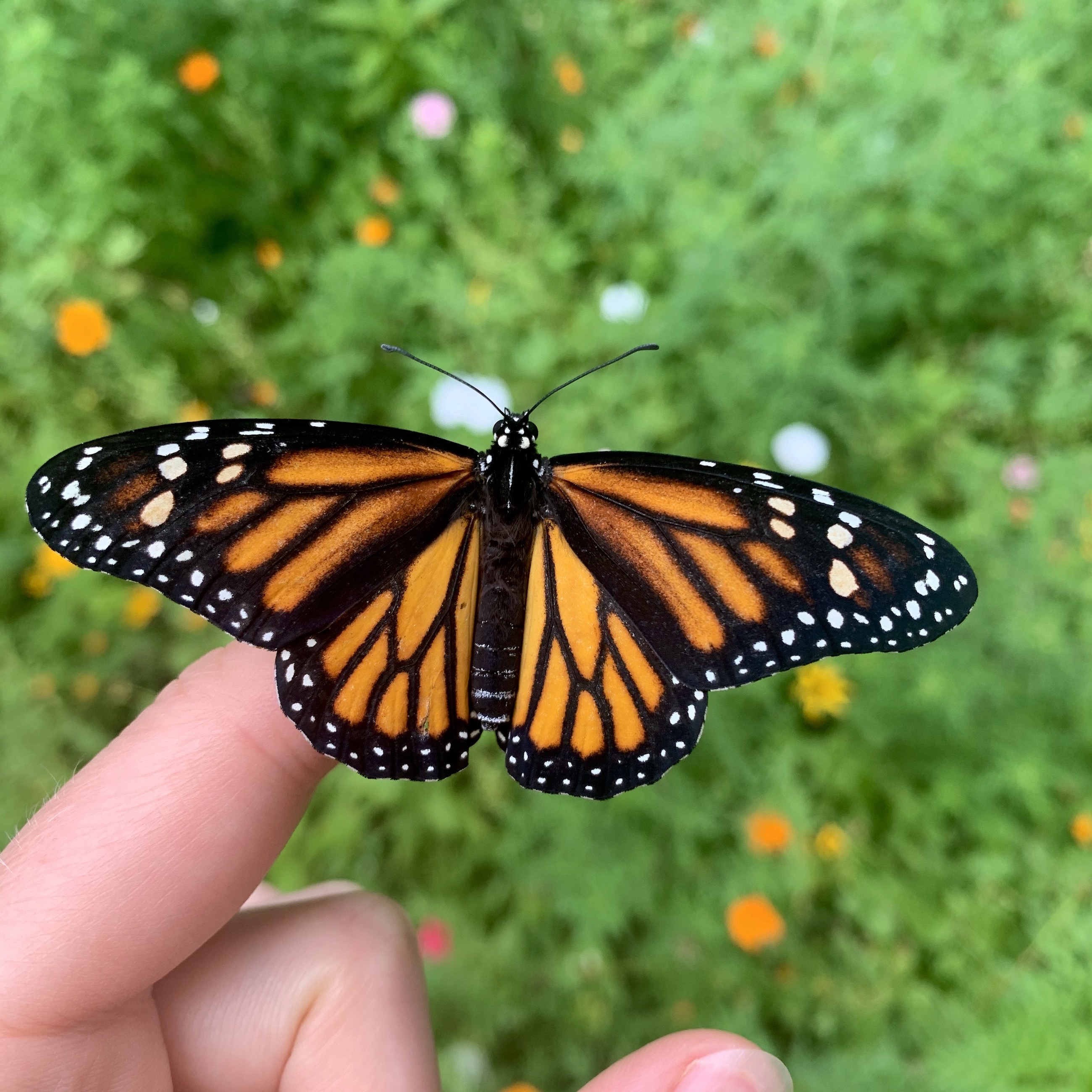
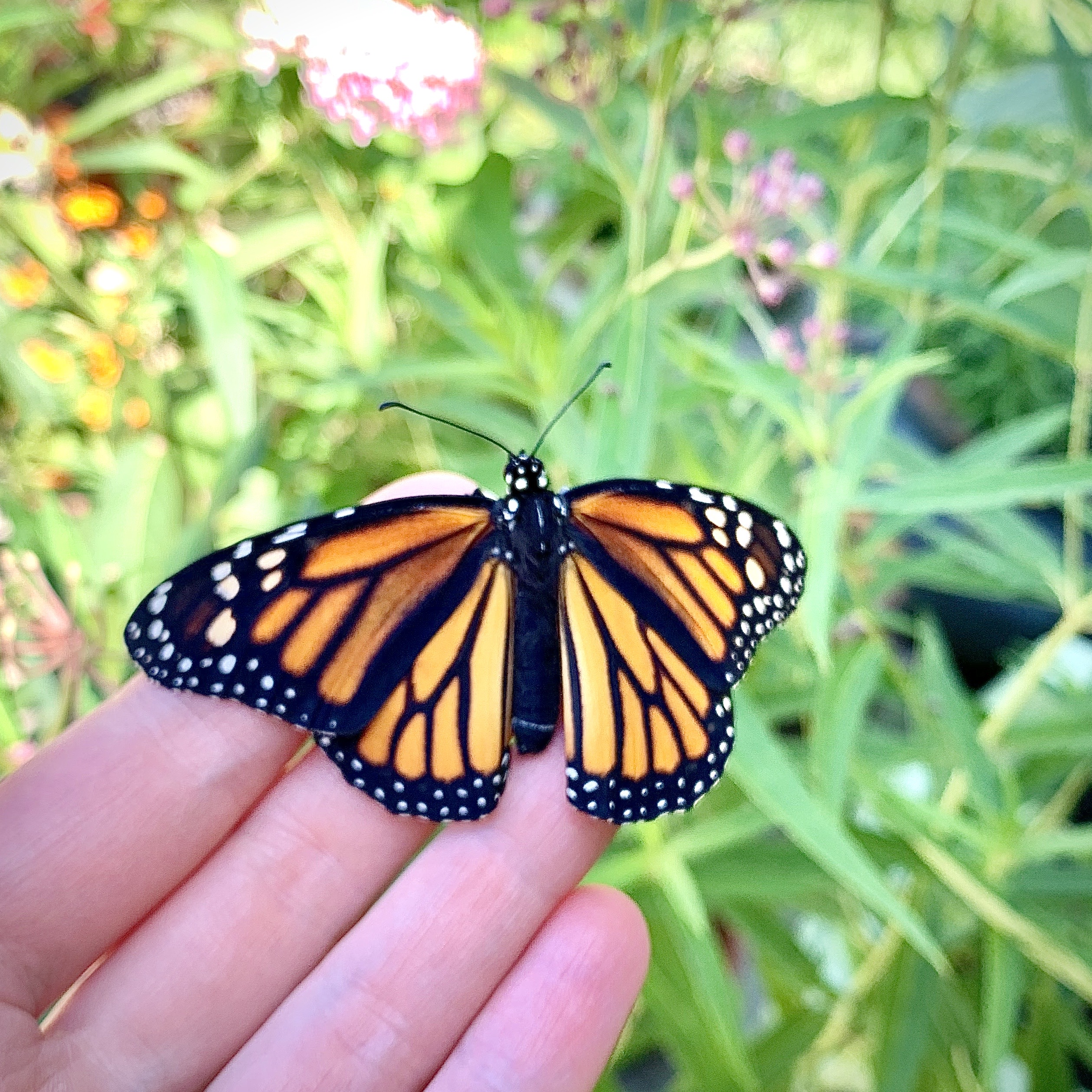
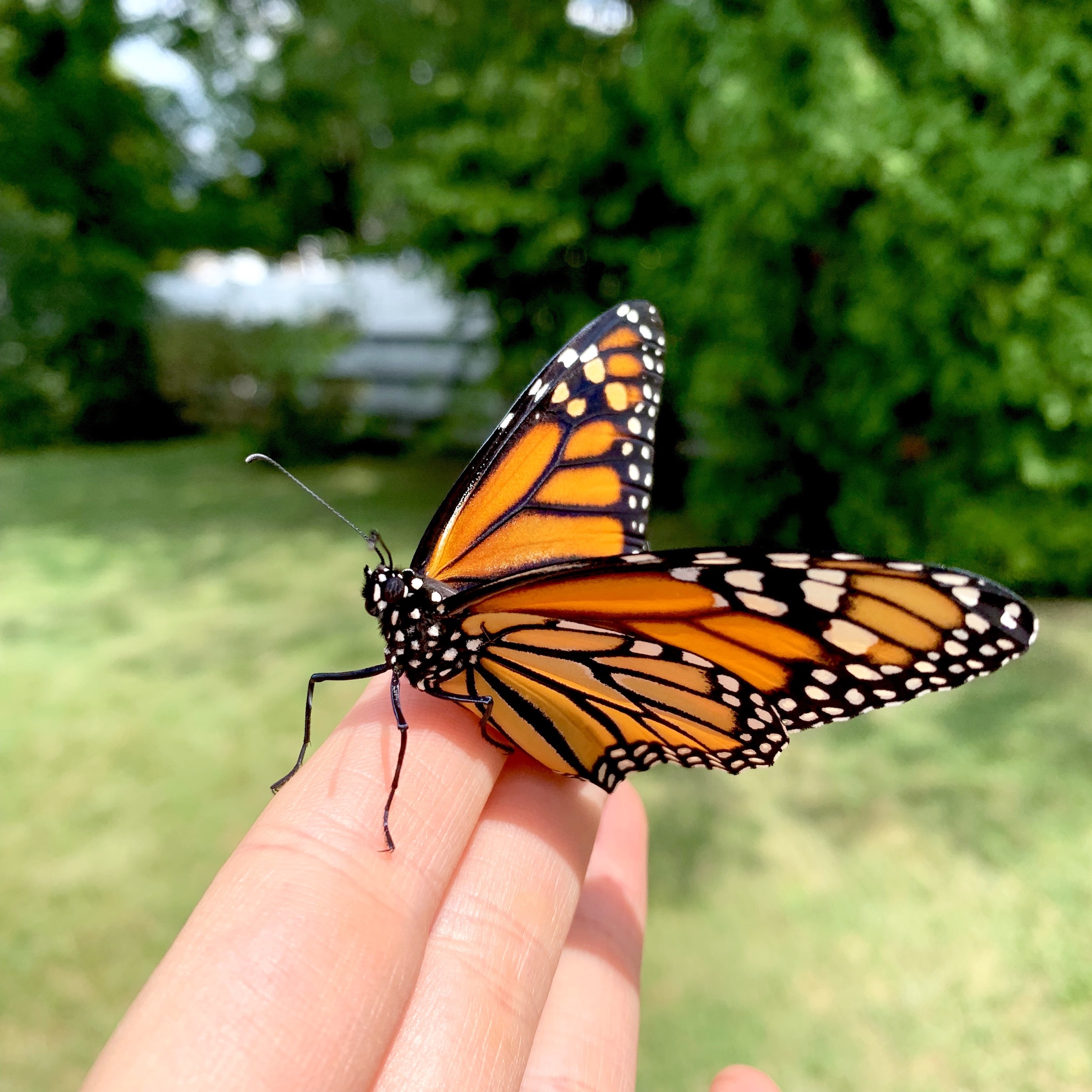
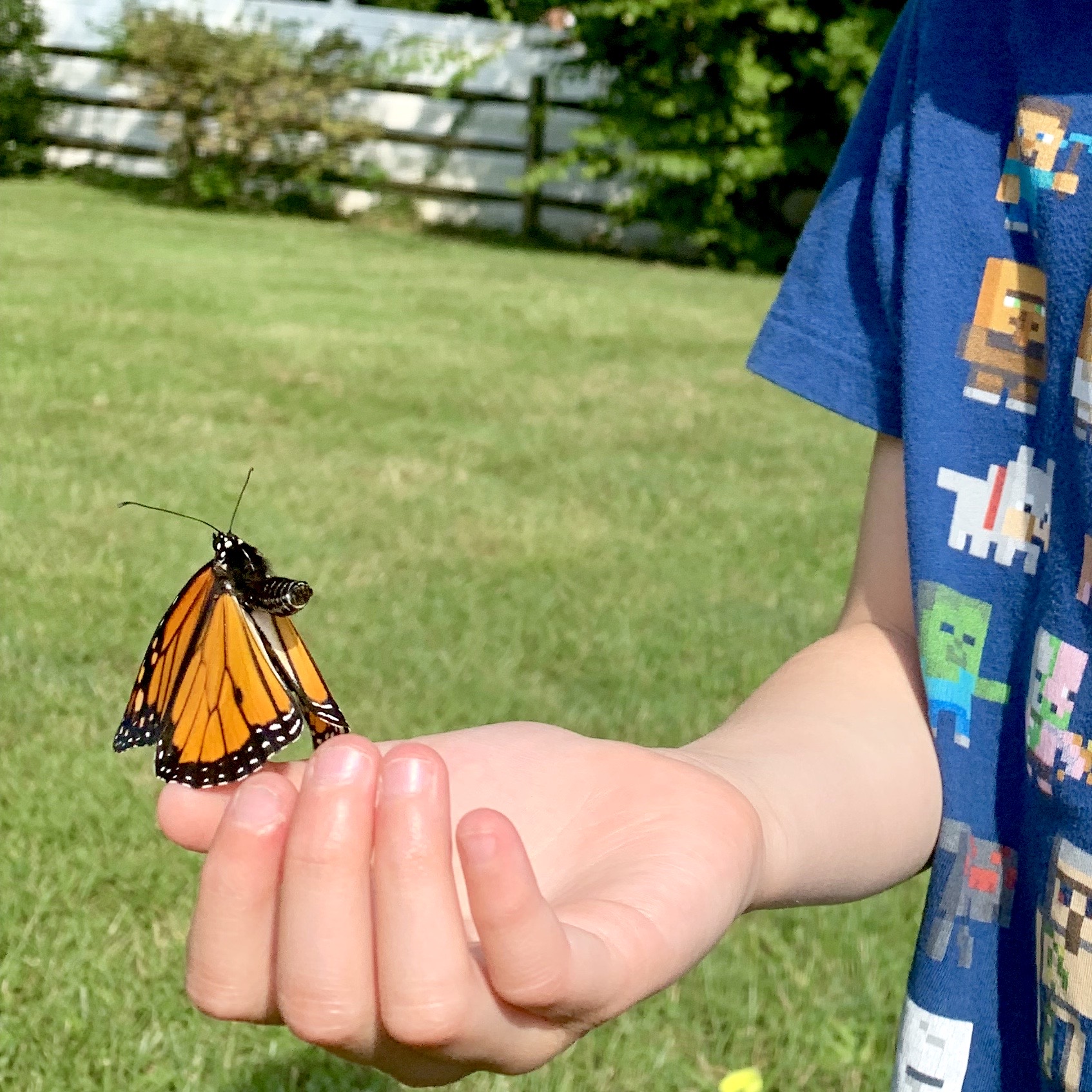
First things first: monarchs cannot exist without milkweed. There are many different kinds of milkweed, which is helpful, but it’s their only food source as caterpillars, and they will die without it. Securing milkweed is the most essential first step. They’ll need it as soon as they hatch, and it’s a great way to get monarch babies without ordering them since monarch butterflies will lay their eggs on them. I prefer swamp milkweed for its large leaves.
I bought my original milkweed from a local native plant shop, Gateway Garden Center. I know the plants from here have not been sprayed with chemicals, and more often than not, there are already monarch caterpillars or eggs on the plants I buy. I used to buy extra large caterpillar houses and place the plant pots directly in there and let them do their thing with minimal intervention. I no longer do this for sanitary reasons–it needs to be cleaned often and, most importantly, it’s more difficult to bleach the leaves (which I’ll get to in a sec).
A few years ago, after raising caterpillars with this low-intervention method, I experienced my first (of many that year) cases of OE, which is a parasite that exists as spores on milkweed and infected butterflies. The caterpillars consume infected milkweed and emerge as infected butterflies. These infected butterflies are deformed and cannot fly. They emerge with crinkled wings that never uncrinkle. It’s heartbreaking to witness, and nothing can be done other than to euthanize.
After I learned about the terrors of OE I approached my monarch-raising setup very differently. I now plant the milkweed in the ground, clip branches as needed, rinse in a 10% bleach to 90% water solution to kill OE, gently pat dry, and then place in a covered container with holes and water like this:

Milkweed dries out quickly without a water source, so if you place cut leaves directly in their habitat, you’ll have to refresh them several times a day. If you forget, they will die, so I’ve found this to be the best solution since the milkweed will now last several days. An additional bonus is that the cute, fuzzy little milkweed seeds from the mother plant plant themselves and emerge next year, so I’ll never have to repurchase milkweed–it’s everywhere now.
I place the container in a small netted enclosure and keep it on a covered porch until the butterflies emerge. It’s best to not maintain more than five or so in these small enclosures to ensure sanitation and general overcrowding are not an issue–they will fight if they get in each other’s way. They sort of head-butt a bit, so nothing too violent, but it’s best to make sure they are not getting stressed out.
I should also add that I’ve tried providing the milkweed and sit back to watch nature do its thing. Monarchs would lay eggs, these eggs would hatch, and 0% would complete the cycle to turn into butterflies–between predators and storms, I watched them get wiped out daily. The safety of the roofed porch and net enclosure enables a much better success rate.
The quickest way to get started is to order freshly hatched monarch caterpillars from Monarch Watch. Alternatively, you can place milkweed outside and wait for a butterfly to lay eggs. Once they emerge, they get to work eating their own eggshell–a very cool thing to witness. From here, they will need a constant supply of milkweed as they grow. Just a couple caterpillars can completely strip a large milkweed plant.
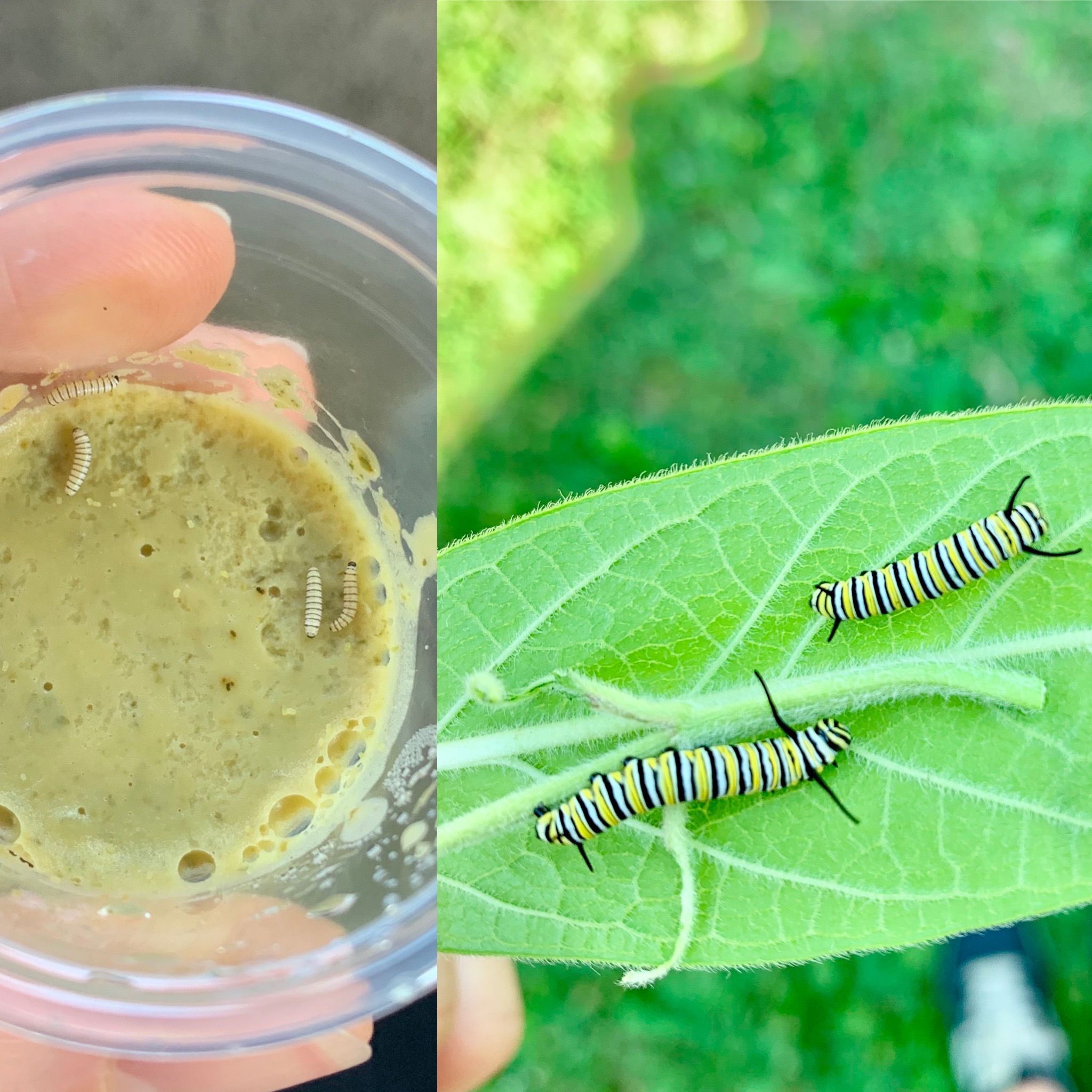
A single female monarch butterfly lays hundreds of eggs during their short lifespan. While this seems like a lot, it’s estimated that as few as 5% successfully turn into butterflies in the wild. So, finding eggs naturally should prove reasonably easy if you have the exceptional eyesight necessary to spot these impossibly tiny, almost transparent eggs attached to the undersides of milkweed leaves. These eggs are usually on the top, most healthy leaves on the plant, and the caterpillar will emerge after about four days, with the egg turning from clear to black during the formation process.

I pick off leaves with eggs on them by the base of the leaf stem and place them in water while I wait for the baby to hatch, then move to prepared milkweed branches.
Once the habitat is ready, the monarchs are hatched, and their primary job is eating. The daily to-dos will be cleaning up waste and replenishing milkweed via the cut, bleach, and dry method. As they get bigger, these demands become more pressing and more challenging to keep up with, so it’s best to check on them a couple times a day.
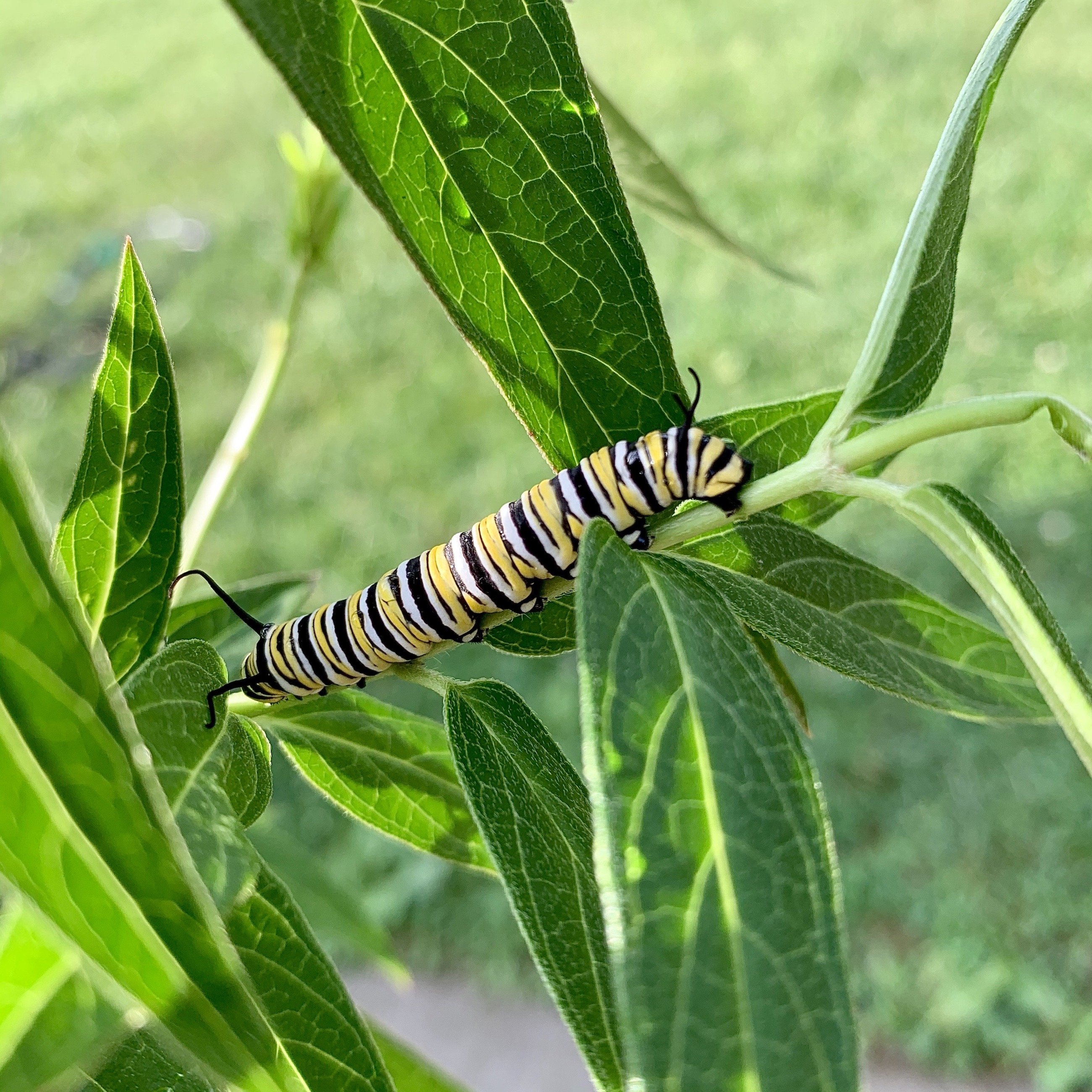
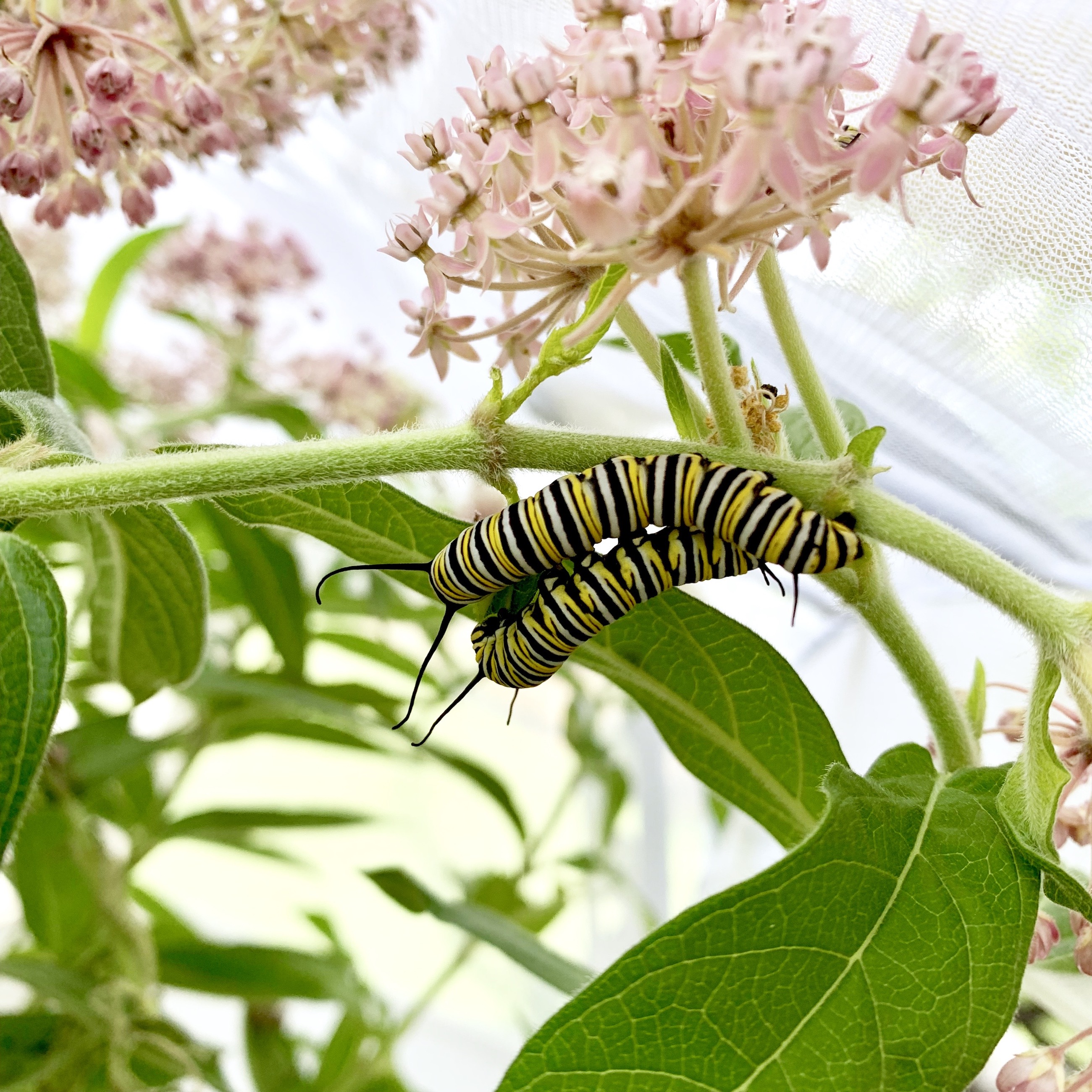
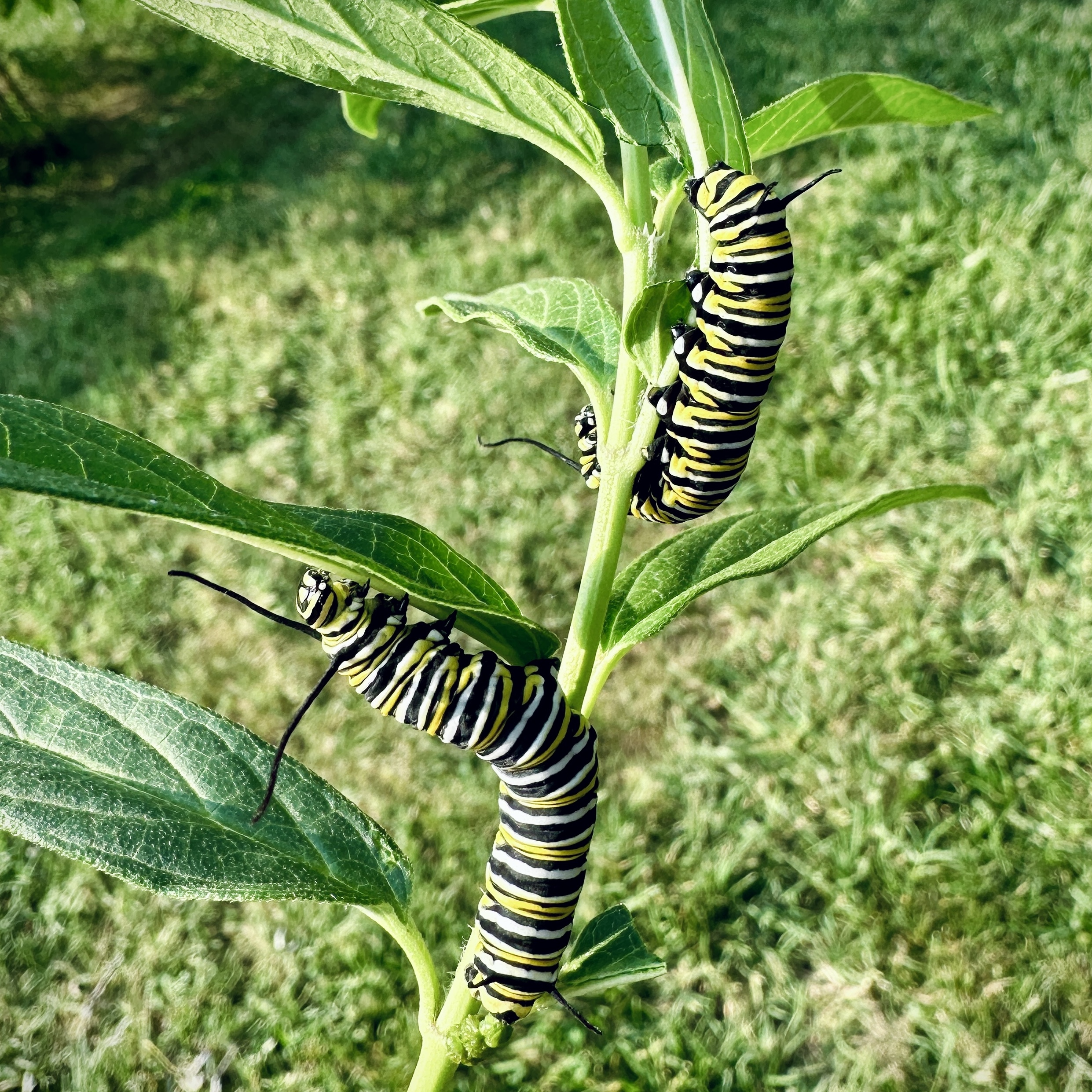
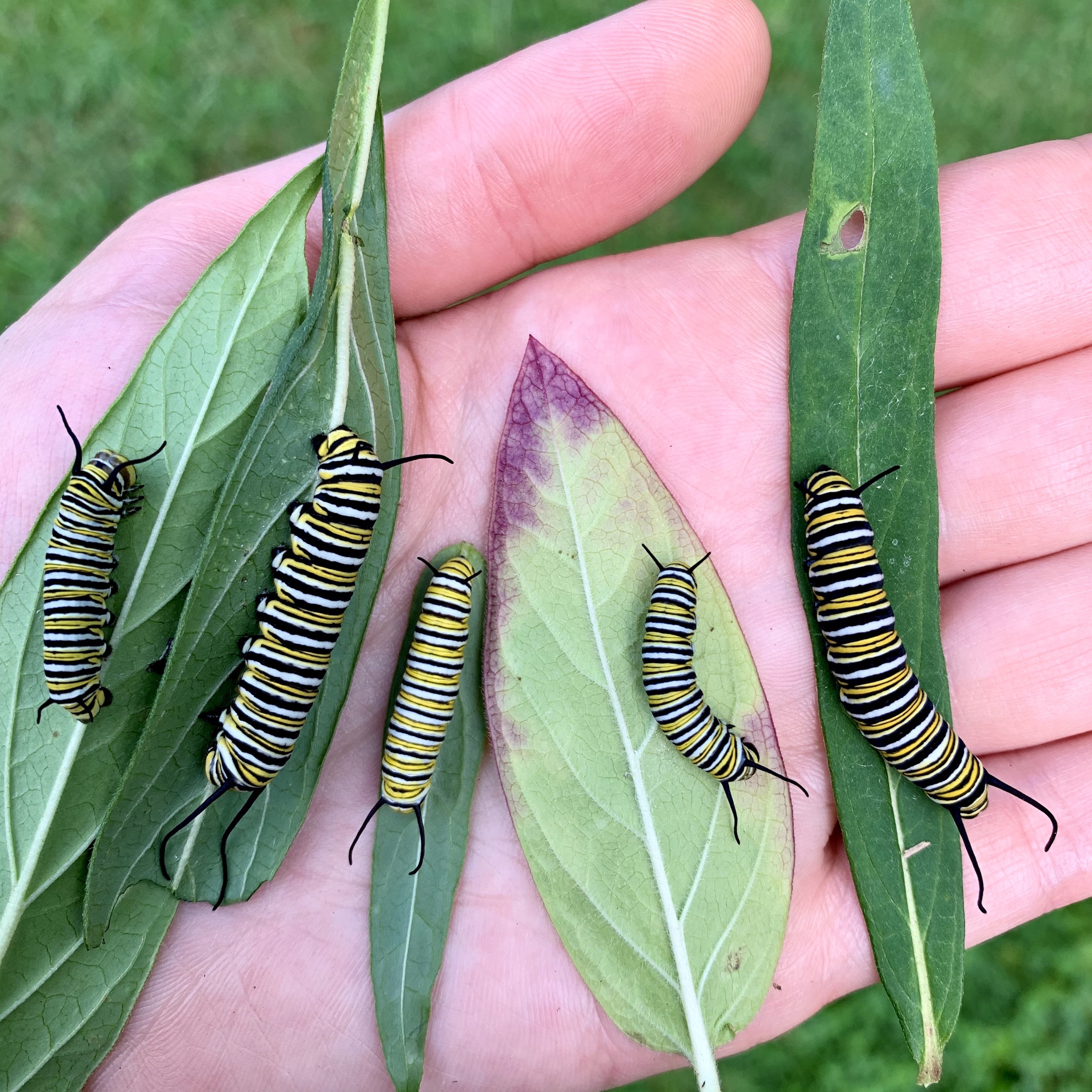
Occasionally, a caterpillar doesn’t attach its chrysalis to a surface well, or something knocks it down. In these situations, I’ve found it’s better to risk hanging it up with string or tiny clothespins than to leave it on the ground since it will struggle to form and emerge properly. A small stem should be at the top of the chrysalis that will allow this alternative hanging method to be carried out.
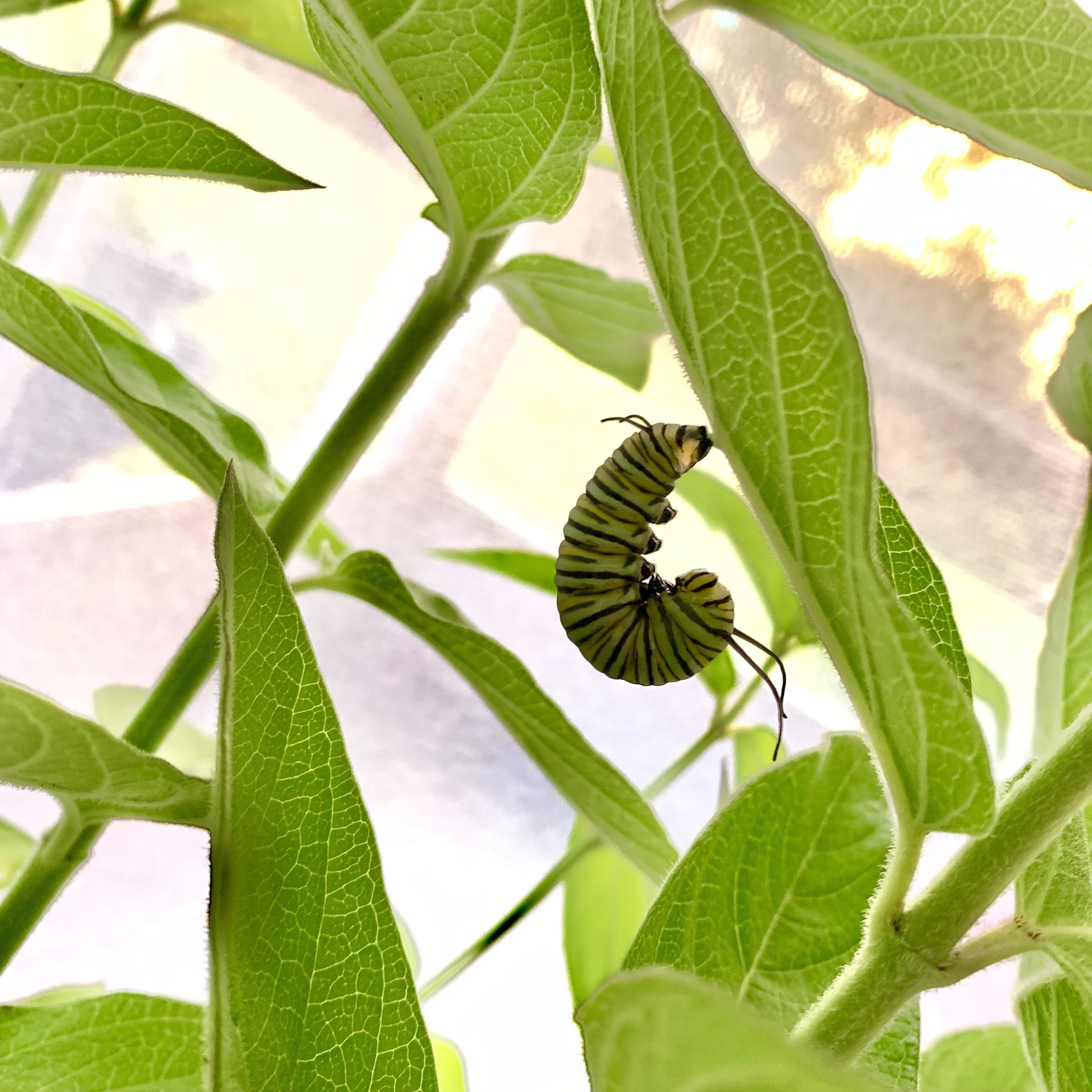
If you’ve never experienced it, it’s hard to explain, but these things poop constantly. As they get bigger, their poop becomes unreasonably large, and it just never ends. Because of this, I’d advise against raising them inside if possible. If you have to raise them indoors, only raise a few and keep them away from main living areas like kitchens and living rooms–it will smell and get everywhere.
I mean this with all the love in the world–these caterpillars are not especially intelligent. They will sometimes wander away from the milkweed even if they are nowhere near the chrysalis stage and must be herded back. Additionally, you are what you eat, so monarch caterpillars are milkweed. This becomes especially evident when they turn into a chrysalis.
Monarch Caterpillars don’t create a little cocoon to live and transform in. They themselves turn into chrysalis–it’s amazing and weird. A newly formed chrysalis is very soft and fragile. On more than one occasion, I’ve seen a monarch form into a chrysalis only to have a hungry caterpillar cross its path and eat it. It’s all just green milkweed goo, and they don’t seem to know the difference.
Now for the best part. Butterflies usually emerge from the chrysalis stage after 9-14 days–it’s quite a sight to see. You’ll know when they are about ready because the green chrysalis will turn transparent, and you can see the curled-up monarch butterfly inside. Once they emerge, their wings have to straighten and dry out, which takes a few hours. You’ll generally know they are ready to be released when they begin fluttering around the enclosure.
I gently cup each monarch in my hand, release it into the yard where there are plenty of flowers, and try not to let my feelings get hurt when they take off instantly without a proper goodbye.
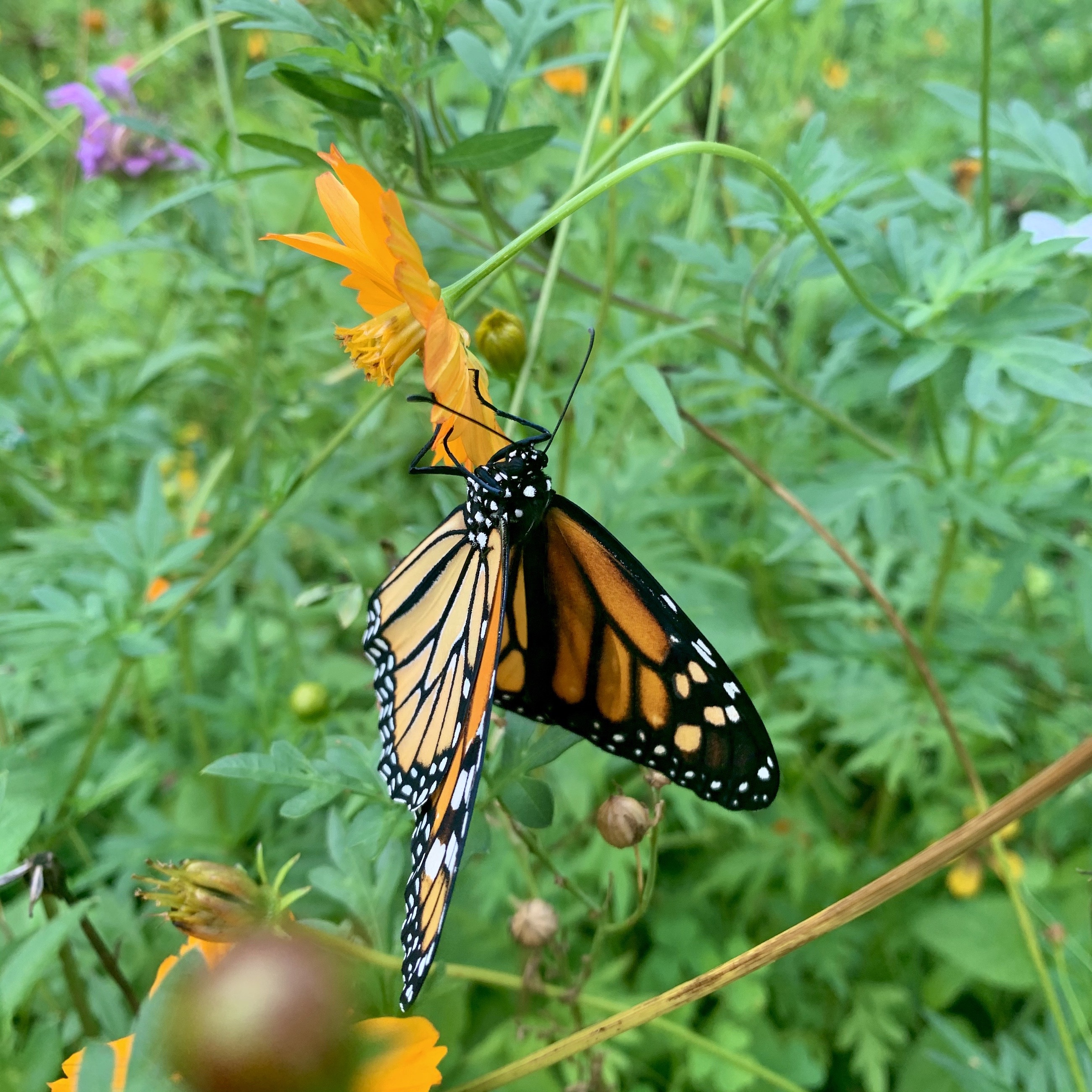
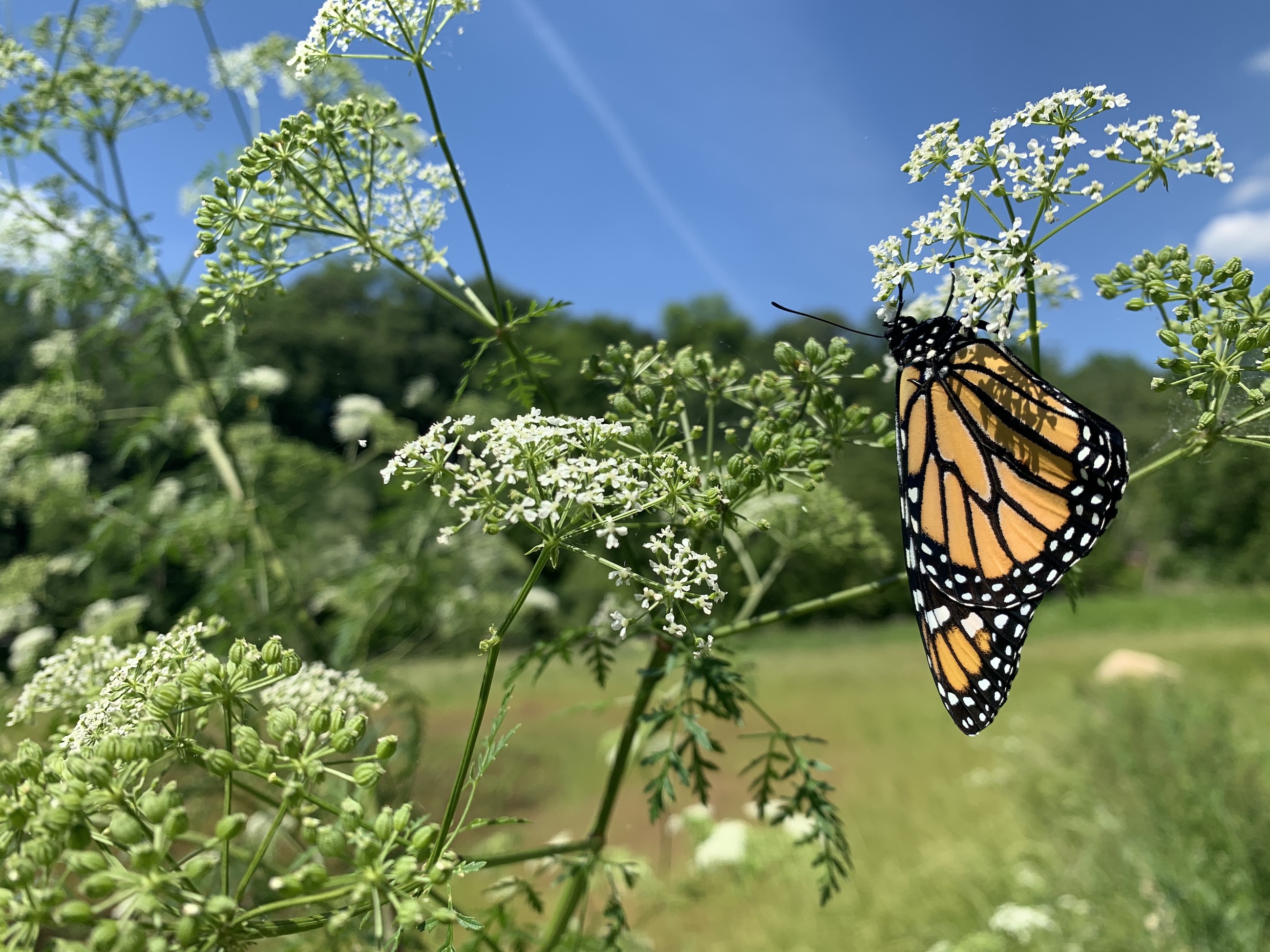
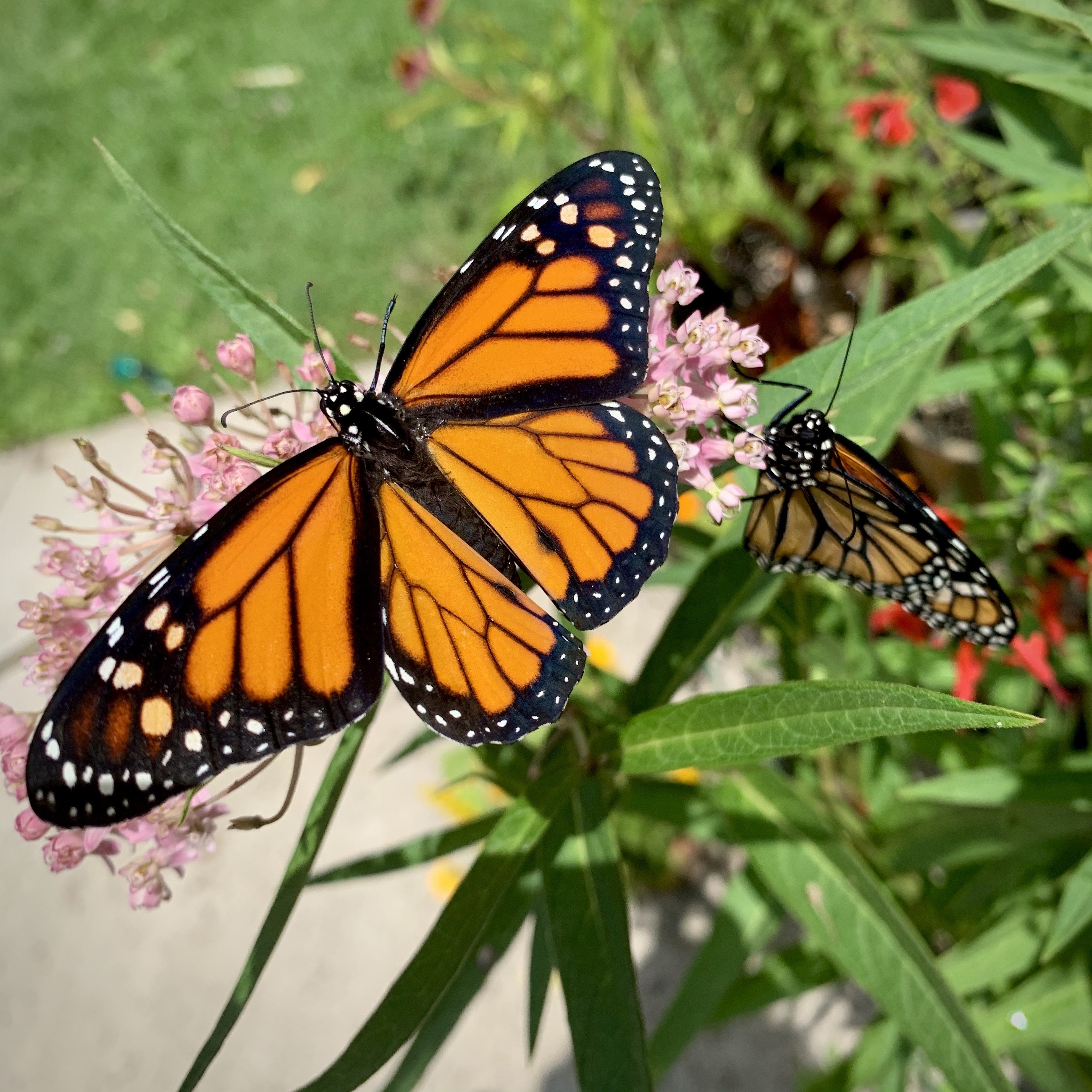
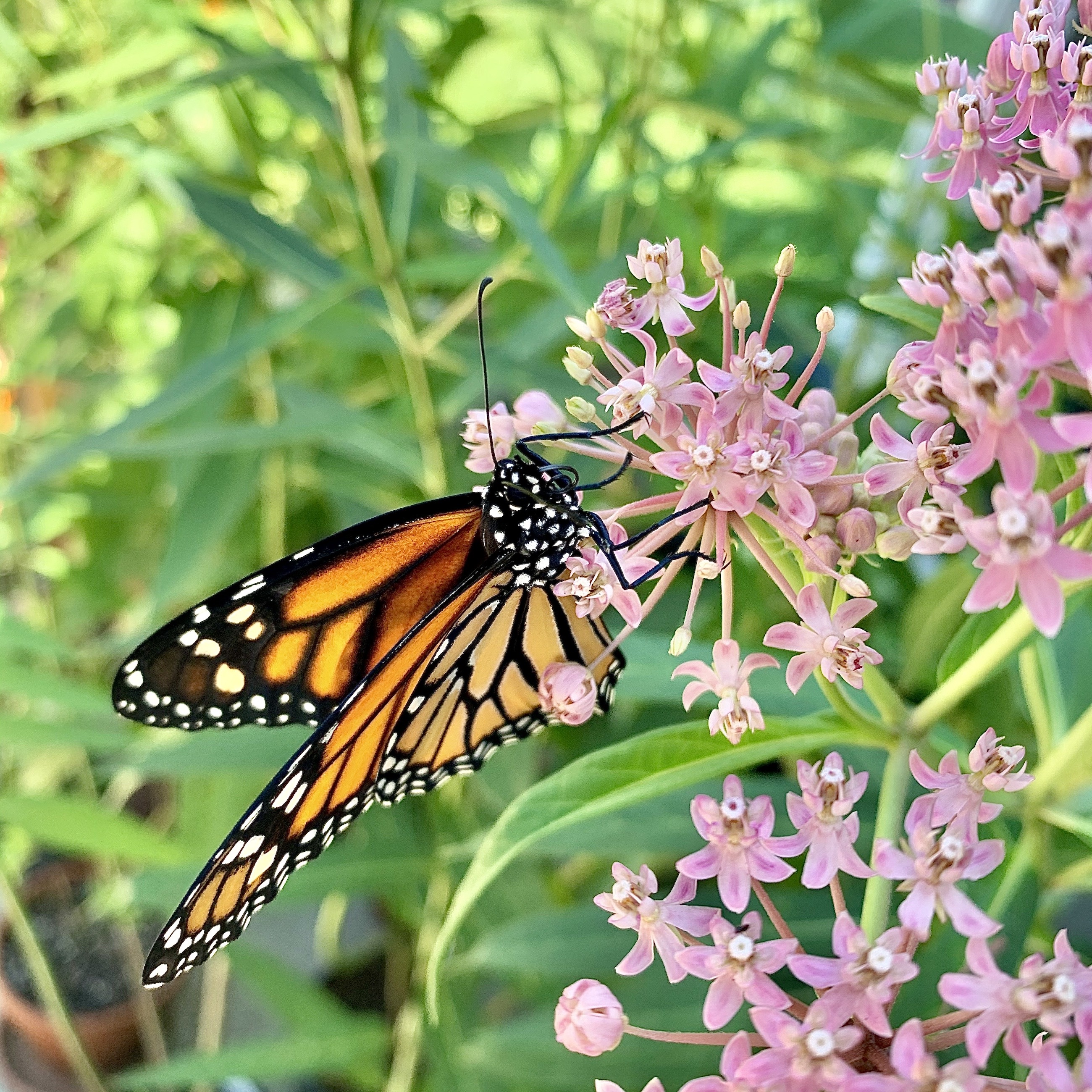
As previously mentioned, this is an incredibly cool experience when releasing monarchs towards the end of summer since they are likely going to be among the ones that make the trip all the way to Mexico.
This process is one of my favorite yearly events. I look forward to it for months and constantly make changes based on lessons learned the previous year. I can’t talk about this stuff enough, so if you have any experiences to share and want to chat, feel free to email me find me on Mastodon–let’s bond over bugs.